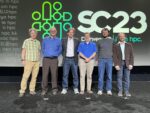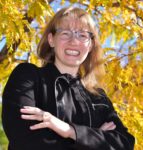A Lawrence Livermore National Laboratory (LLNL)-led effort that performed an unprecedented global climate model simulation on the world’s first exascale supercomputer has won the first-ever Association for Computing Machinery (ACM) Gordon Bell Prize for Climate Modelling, ACM officials announced Thursday. The Simple Cloud Resolving E3SM Atmosphere Model (SCREAM) team, led by LLNL staff scientist Peter Caldwell and […]
ORNL: Updated Exascale Earth Simulation Model Delivers 2X Speed
Oak Ridge National Laboratory announced today that a new version of the Energy Exascale Earth System Model, or E3SM, is two times faster than an earlier version released in 2018. Earth system models have weather-scale resolution and use advanced computers to simulate aspects of earth’s variability and anticipate decadal changes that will critically impact the […]
Ruby Leung, Chief Scientist for Energy Exascale Earth System Model Project, Named a DOE Distinguished Scientist Fellow.
Ruby Leung likes to ask questions. That started at her high school in Hong Kong, where she also became interested in science. “I was one of those kids in science who always was curious. And then you can find the answers,” said Leung, an atmospheric scientist at Pacific Northwest National Laboratory (PNNL) in Richland, Washington. “Of course, after you […]
DOE Funding $7.7M for 11 Earth & Environmental Systems Modeling Studies
Today, the U.S. Department of Energy (DOE) announced $7.7 million in funding for 11 studies to improve understanding of earth system predictability and DOE’s Energy Exascale Earth System Model (E3SM) climate model. Funding totals $7.7 million in FY2021 dollars for 11 projects lasting three years. A list of projects can be found at the BER website […]
Energy Exascale Earth System Model to Accelerate Climate Research
As one of the Grand Challenges of our time, climate modeling typically requires long run times and huge computational resources. Sandia National Laboratories has awarded Kelsey DiPietro a Jill Hruby Fellowship to tackle this issue. As an applied mathematician, DiPietro has proposed a way to make computer models more efficient — improving accuracy without increasing time or resources to run them.
Earth-modeling System steps up to Exascale
“Unveiled today by the DOE, E3SM is a state-of-the-science modeling project that uses the world’s fastest computers to more accurately understand how Earth’s climate work and can evolve into the future. The goal: to support DOE’s mission to plan for robust, efficient, and cost-effective energy infrastructures now, and into the distant future.”








